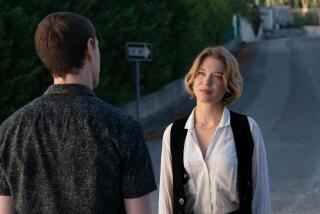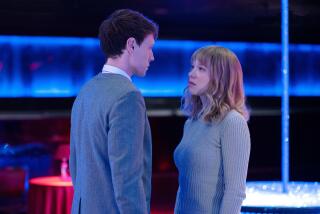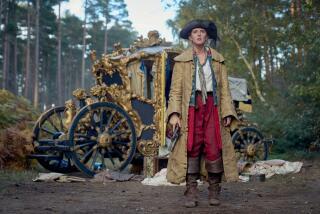First Belle, now Alice: How screenwriter and headbanger Linda Woolverton is remaking Disney heroines for a feminist age
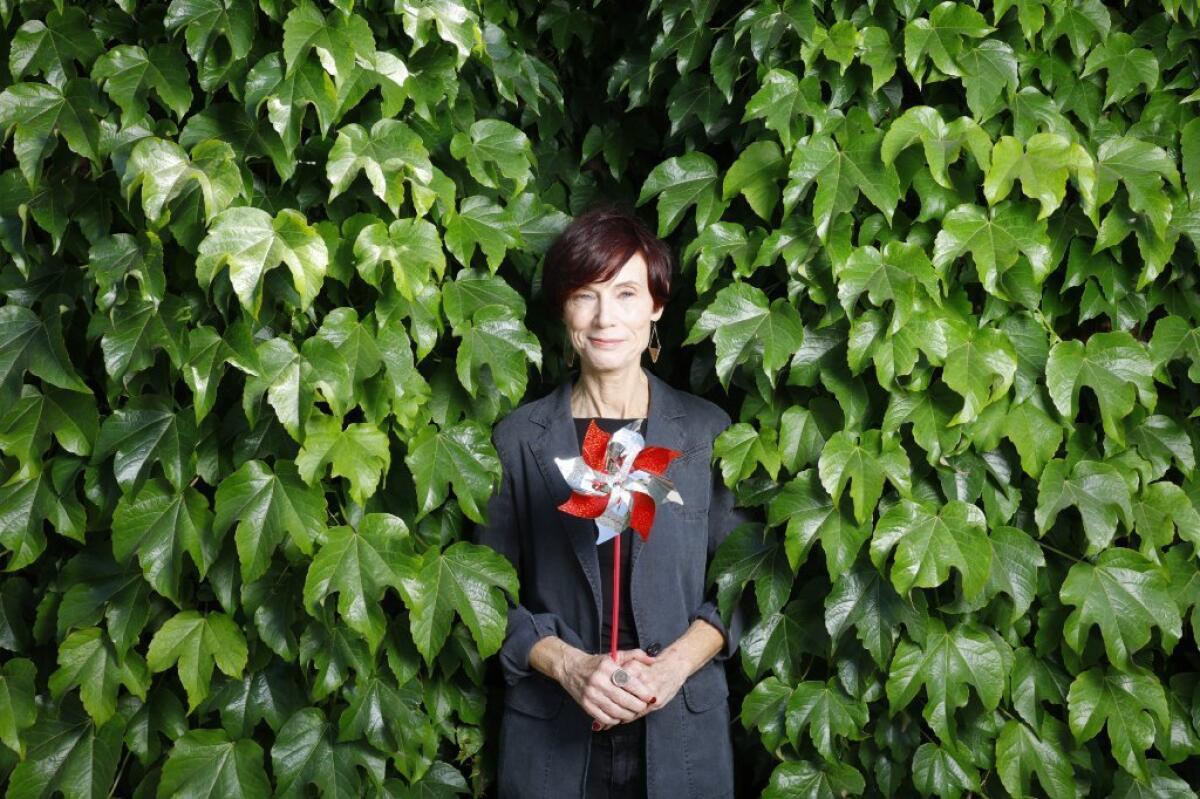
When Linda Woolverton was writing the screenplay for 1991’s “Beauty and the Beast,” she developed a reputation for banging her head on the table in meetings. Together with lyricist Howard Ashman, Woolverton was determined to update the fairy tale’s heroine for a modern, feminist age, an approach that occasionally clashed with the more traditional ideas of Disney feature animation’s story department.
“I’d say, ‘Belle is not baking a cake! She’s putting pins in a map of where she wants to go in her life,’” Woolverton said, in a recent interview at a cafe near her Hancock Park home. “I’m sure I was a total pain … but look what happened. We got Belle out of it.”
Belle, Maleficent, Alice -- Woolverton’s career is defined by her unconventional female characters, a cabal of bookworms, adventurers and wicked women who together have made nearly $3 billion at the box office, all of it for Disney.
With the release of the “Alice in Wonderland” sequel “Alice Through the Looking Glass” over the weekend, Woolverton has evolved the blond Lewis Carroll character played by Mia Wasikowska further still, writing her as a sea captain who travels the world, faces hospitalization for “female hysteria” and rescues Johnny Depp’s Mad Hatter.
“I have absolutely set out over my career to move the female protagonist forward through time,” said Woolverton, 63. “Growing up, my favorite movie was ‘Lawrence of Arabia,’ and I wanted to see a woman lead that life of adventure.”
Raised in Long Beach, the daughter of a technical writer and a schoolteacher, Woolverton had adventures of her own as a child, some of which inform her most recent movie. She learned to tie knots on her family’s 45-foot boat, which they sailed up the California coast, and took a hard bump on her head while playing with friends -- an event that emerges as a key plot point in “Alice Through the Looking Glass.”
Woolverton lived an hour from Disneyland and often celebrated friends’ birthdays there, both reveling in the company’s fairy tale culture and chafing against it.
“I grew up in that princess culture,” Woolverton said. “I remember feeling very incensed that the men would retire to the library and talk about interesting things and the women and girls were supposed to be over here baking and sewing. We weren’t supposed to be thinkers or philosophers.”
After getting her masters degree in children’s theater at Cal State Fullerton, Woolverton took a job as a secretary at CBS in the 1980s, writing a young adult novel on her lunch hour as she waited for an opportunity in the children’s programming department. She ultimately quit CBS and worked as a substitute teacher, a job that left her more time for writing novels, before landing work on children’s cartoons like “My Little Pony” and “Star Wars: Ewoks.”
BOX OFFICE: ‘X-Men’ and ‘Alice’ make for underwhelming Memorial Day weekend >>
Jeffrey Katzenberg, at the time charged with turning around Disney’s struggling feature animation unit, read Woolverton’s second novel, 1987’s “Running Before the Wind,” and hired her to adapt “Beauty and the Beast.”
Traditionally animation hadn’t employed screenwriters but rather relied on a committee-based story process, and Katzenberg’s move ruffled feathers.
“I wasn’t wanted,” Woolverton said. “And I was a girl. They were, like: Who the hell are you?”
But together with Ashman, who had just guided the studio to a commercial and critical hit with “The Little Mermaid’s” “Under the Sea,” Woolverton set about crafting Belle into a different sort of Disney heroine. They wrote her as an intellect and shifted her focus so that she wasn’t waiting to be saved.
“Introducing me to Howard Ashman was the biggest gift Disney ever gave me,” Woolverton said. “I learned about writing from him and I learned about fighting from him.”
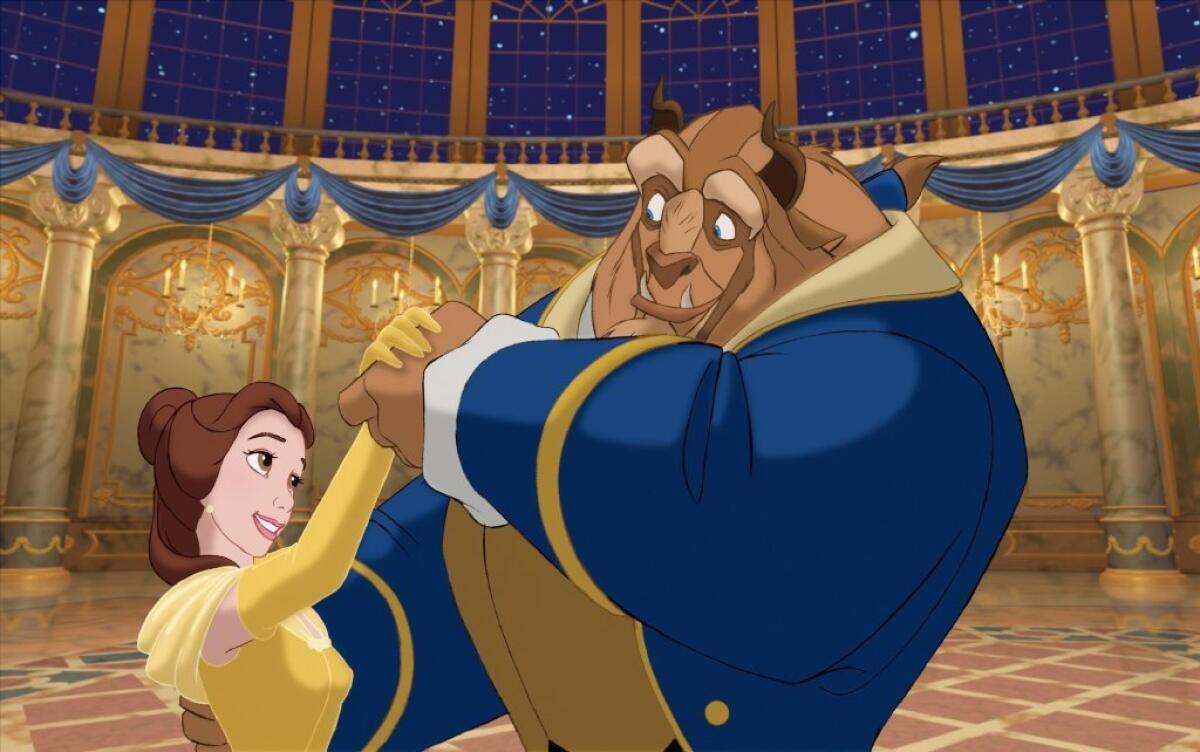
Married to producer Lee Flicker at the time, from whom she is now divorced, Woolverton had a daughter, Keaton, and spent the next 15 years writing movies and Broadway shows for Disney.
In 2006, at the urging of her agent, who was looking for tentpole scripts, Woolverton wrote the first “Alice” movie, taking great liberties with Carroll’s Victorian-era fantasy novels. She aged Alice up from a child to a young adult and crafted a narrative that enticed director Tim Burton, who became a close collaborator.
On the strength of its lush visuals and its protagonist’s appeal among young women in particular, the movie became a surprise hit, and Woolverton became the only female screenwriter in history with sole writing credit on a billion-dollar film.
“It took the industry by surprise because nobody expected a female protagonist to make a billion dollars,” she said.
The Angelina Jolie-starring “Maleficent,” another hit, soon followed. With the new Alice movie, which is directed by “Muppets” director James Bobin, Woolverton said she wanted to delve deeper and create some backstory for Carroll’s strange characters.
“My mandate was, let’s let the audience in on the why of it all,” Woolverton said. “Why does the Red Queen have a giant head? What’s the relationship between the two sisters? Why do they hate each other? What happened to the Hatter’s family on that horrible day? What’s with Alice and her mother? I wanted to fill in all the blanks.”
Woolverton is currently at work on a “Maleficent” sequel for Jolie, and – as the original’s writer – has a screenwriting credit on the live-action “Beauty and the Beast,” due from Disney next year, though she said she is not creatively involved in the film. “I hope it’s fantastic,” Woolverton said of the new “Beauty,” which is directed by Bill Condon. “That’s all I can say at this point.”
She said she has not been asked to write a superhero movie – despite having made so much loot for Disney, which also owns Marvel – but has turned down some films she considered too derivative. A “Clan of the Cave Bear” pilot she wrote for Lifetime ended up not going forward, but she said she is interested in TV.
“TV is an interesting new place to me,” Woolverton said. “There are a lot of women working in TV. I like that everything doesn’t have to be branded and based in something people know. I’d like room for more originality right now.”
MORE:
Helena Bonham Carter brings her brand of formal oddity to ‘Alice Through the Looking Glass’
Sacha Baron Cohen goes on another Hollywood ‘wild ride’
‘Alice Through the Looking Glass’ is more blunder than wonder
Gender bias in Hollywood? U.S. digs deeper to investigate the industry’s hiring practices
On Twitter: @ThatRebecca
More to Read
Only good movies
Get the Indie Focus newsletter, Mark Olsen's weekly guide to the world of cinema.
You may occasionally receive promotional content from the Los Angeles Times.
